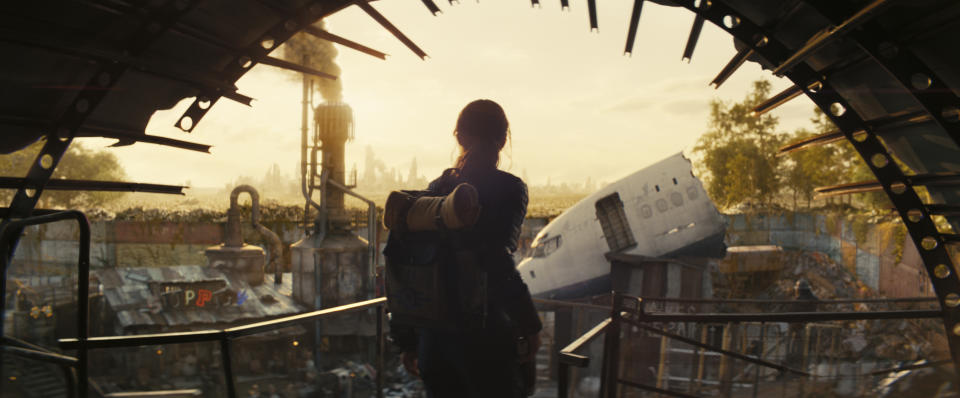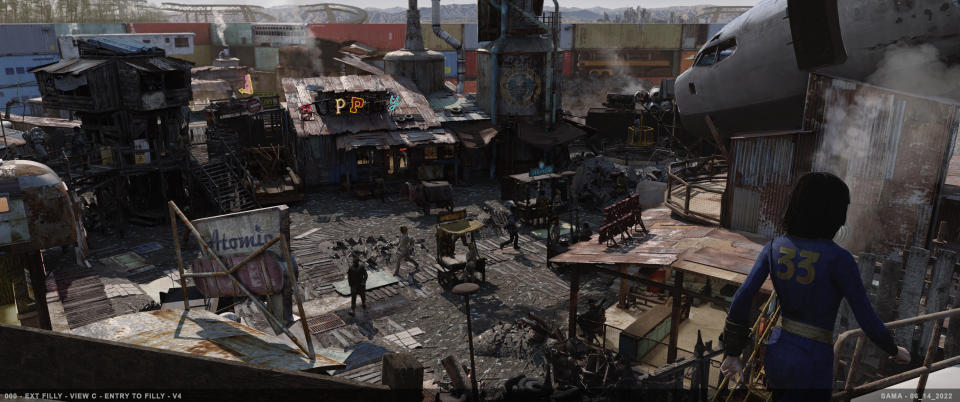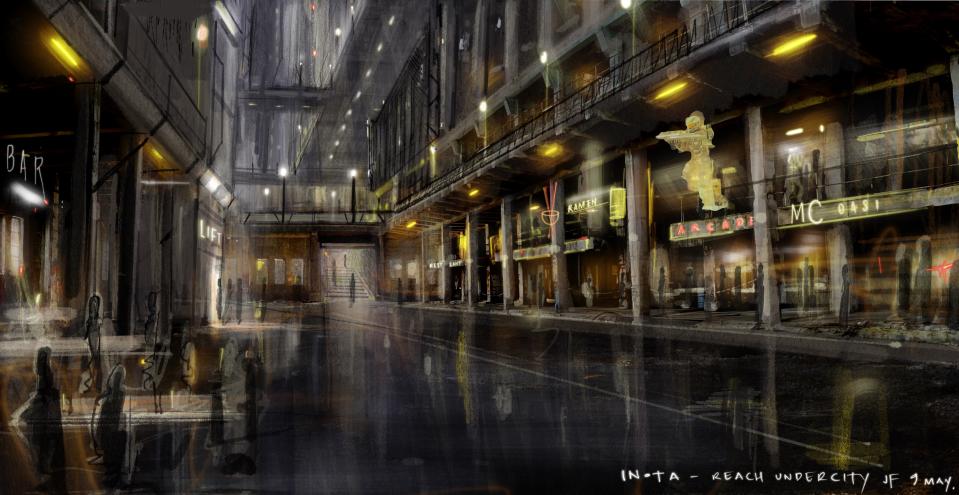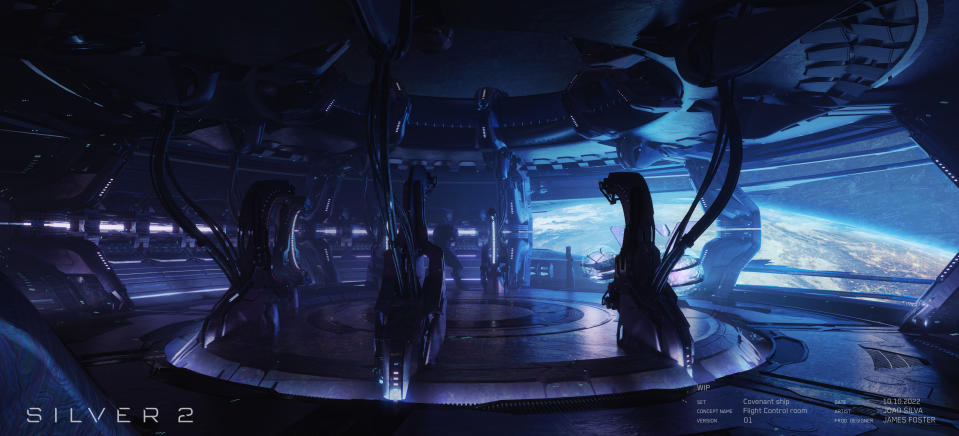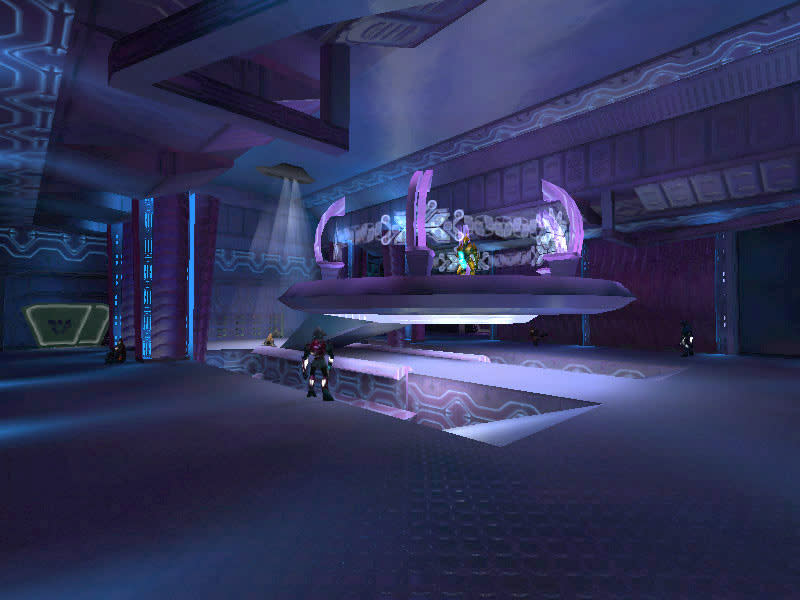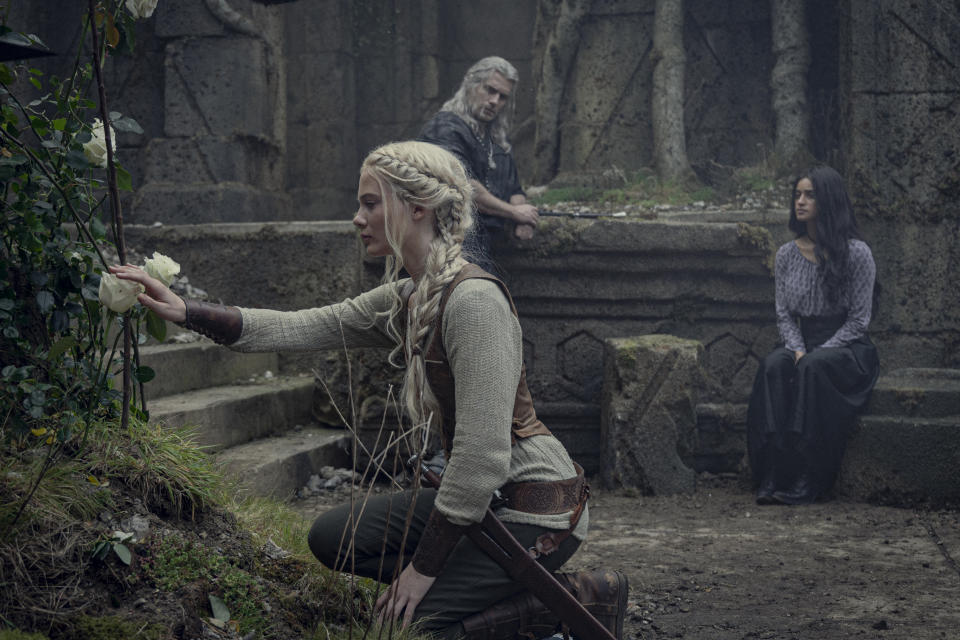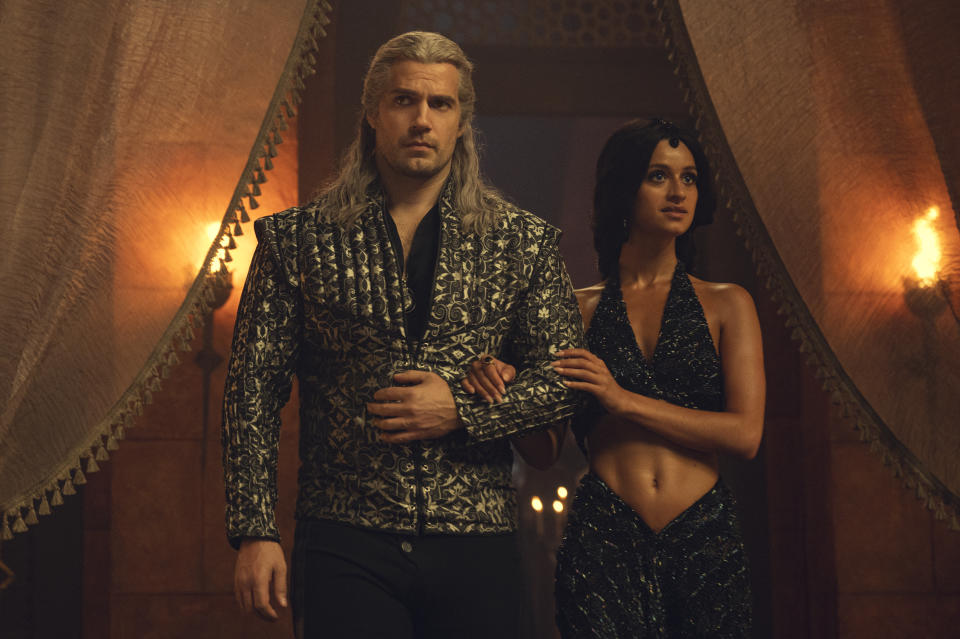Whether exploring post-apocalyptic wastelands or the far reaches of space, it’s easy to get lost in the visual language of a video game world. Transitioning that experience into a cinematic storytelling form is no easy task, but this season has seen more than a few production designers square up to the challenge.
Fallouttakes some visual models from the Bethesda game series for an entirely new story,Halogrounds the sci-fi game universe with real world architecture, and althoughThe Witcherexists as a video game series, the Netflix series version focuses on finding depth in Andrzej Sapkowski’s original fantasy novels.
More from Deadline
Fallout
While he had never played theFalloutgames himself, production designer Howard Cummings took on the role of the eagle-eyed fan looking for anything out of place. “I knew the fans would tear me to shreds if something didn’t seem like it fit,” he says. “I remember someone was analyzing the trailer and talking about how the bolt shapes in the vault match the ones in the game, and I go, ‘Yeah, we 3D printed those and had mold makers make thousands of them to get the exact right shape.’”
The journey to this level of detail began with the script, when director Jonathan Nolan brought Cummings on board. “I watched a lot of YouTube videos fans made, and they were the most informative thing I could watch,” he says. “I couldn’t play the game at that level, but I could watch people spending hours and hours cutting together storylines, and I couldn’t believe how visually dense it was.” At that point, Cummings decided that his challenge was to actually recreate the aesthetic of the game with the new story.
The first setting the viewer is introduced to is the vault, with a farming community. “This crazy cornfield is a new room in the vault that’s not in any of the games, and the showrunners wanted it to look like a bad production of Oklahoma,” he says. “We took the parts you can play with in the game to build vaults and we actually broke down those ‘game rules’ and designed the parts to match.” To create the actual scale needed, Cummings needed to put up a volume stage. “It’s basically an entire room built out of LED screens, so the actors aren’t in front of a green or blue screen, they’re actually in front of the image and the lights are all interactive.”
A major location outside the vault is Filly, a town made entirely from scrap metal and scavenged materials. “It’s similar to Megaton City in the game, but then actually trying to physically do it… for instance, there’s a jet nose of a 747 stuck on top of a building.” Where some might opt for a CG approach, Cummings says it needed to be real. While the town looks “rickety” as he puts it, each piece of scrap was wired by hand onto steel armatures for stability. “Underneath it all is so much steel and engineering, it’s like 50 feet high.”
Halo
Joining the series in its second season,Haloproduction designer James Foster’s goal was to emphasize the “reality within the environments” to ground the drama of the story. “It might sound ridiculous considering we’re in the 26th century, but I was diving into real world references like Tibetan environments for the slightly monastic, sanctuary environments in the first episode.”
Real-world influences aided Foster as he designed the environments for Reach, a planet housing a large military complex. “I was looking at distinct cityscape environments that would resonate as a kind of military-based port town environment,” he says. After taking the reference as a base, then it was important to amplify the scale and tone to match the sci-fi universe. “By keeping it real, we inherit that sense of wonder that they managed to find in the illustrative work for the game without going into fantasy.”
To get a better sense of that style and tone, Foster would turn to EP Kiki Wolfkill, who was originally from 343 Industries, the company that developed theHalogame series. “I initially looked at the progression of the graphic world within the games and how they had progressed, and I was in a lot of conversations with Kiki who has all that backstory,” says Foster. In addition to having a former member of theHalovideo game studio on set to help, Foster also says he and other key creatives went through aHaloboot camp when he joined. “I did my homework with regards to the visuals within the game and the concept work that had been done.”
All of that preparation paid off for Foster as he was faced with the most daunting of the environments this season—the Covenant ship. “In terms of environments, it was possibly one of the most challenging things that I’ve had to do,” he says. Since the style of the Covenant ships have changed over the course of the series, Foster couldn’t rely on a specific point of reference. “There were certain areas within some game environments that were close to being the central hub area we needed for the flight deck… We also wanted to lean into a scarier environment, not quite as bright and colorful as you might see within the game, but we wanted to make sure that we still had some of those color elements. Lots of shadow, light and an intense amount of detail go into a flight deck console that you might take for granted if you are within the game space, but to make it for real is quite an undertaking.”
The Witcher
When Netflix’sThe Witchercame out in 2019, there was already a video game series with an established visual interpretation of Andrzej Sapkowski’s fantasy novels. However, production designer Andrew Laws says very early on, a choice was made to avoid using the games as a point of reference. “We both start with the same seed of the books,” he says, “but in our development stage we were very clear that we have two unique visual paths.” Instead, Laws turns to the novels when inspiration is needed. “For us, on the design side, it’s about depth. When we’re wanting to color in the edges of a storyline and we want a bit more perspective on what’s going on outside the boundaries, we’ll dip back into the books and see what can inform what we’re doing.”
Depth is everything for the production design ofThe Witcher, according to Laws, who has been with the series since the beginning. “It’s all about intensifying the depth of our own language. We try to keep compounding use of certain architectural languages that we’ve developed early on, and then we grow them as we get through the different seasons.” A prime example of this is Aretuza, a magical academy that has been shown in sections throughout the series before becoming a main location in Season 3. “We were building on this idea of an ancient Elven citadel, so the original form of the architecture is Elven.”
Since Elven architecture is not new for the series, Laws says they have their own architectural language of “certain types of arches and forms, even proportions that we look at as being more from Elven roots than human.” However, the layering of depth comes when the human element is brought in. “Aretuza has been occupied by a human element for quite a long time, so there’s another architecture that is like a prosthetic outside the framework of this ancient Elven building. So, we’ve added more of a human language, with Romanesque arches, and there’s the language of occupation that’s taken on. Now, you have two different pieces working together to make it a very unique visual language.”
Best of Deadline
2024 Premiere Dates For New & Returning Series On Broadcast, Cable & Streaming
'Knives Out 3': Everything We Know About The Second Rian Johnson Sequel
Hollywood & Media Deaths In 2024: Photo Gallery & Obituaries
Sign up for Deadline's Newsletter. For the latest news, follow us on Facebook, Twitter, and Instagram.

